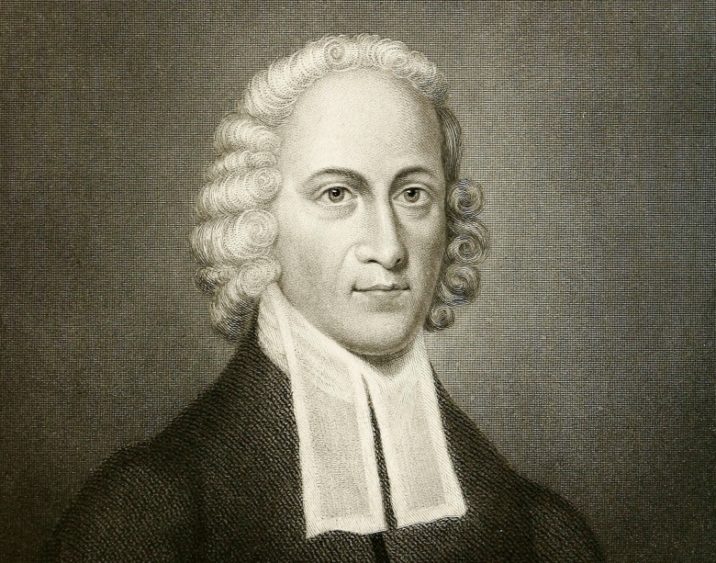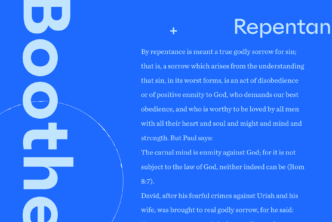If you hang around someone long enough, be careful: you might end up becoming more and more like them. You may pick up some of their mannerisms. You may begin to use some of their expressions. If you truly admire them, you might even begin to dress like them or evidence other forms of sincerest flattery.
Since I began studying Jonathan Edwards for my doctoral dissertation several years ago, I realized that I am slowly becoming more and more like him, too. (Except for the white, powdered wig of course!)
Let me explain.
Edwards (1703–1758) was a local church pastor, which happens to be the same vocation that I share. As I began to research his numerous written works and treatises, I became increasingly aware of his incredible personal and professional organizational skills. With meetings, projects, sermons, lectures, and Bible studies always coming due, most pastors can stand to get a bit more organized. As I studied Edwards’ writings and insights, I realized that I might be sitting at the feet of not only Edwards’ intellectual genius but his organizational genius, too.
Let me briefly share three ways that I have purposefully imported Edwards’ own practices of personal discipline and organization into my own. Two of these are old fashioned—paper and ink projects. The third I have adapted with some modern technology.
Miscellanies
When Jonathan Edwards was just nineteen years old, he began one of his most ambitious organizational projects, a collection of notes, thoughts, observations, and insights known as his Miscellanies. One by one, he began taking notes on just about everything: Bible passages, theological concepts, observations from books he was reading … anything. Some of these “miscellanies” are quite short. Not more than a paragraph. Others are much longer—several pages even. Some miscellanies became proto-sermons for later use, and others were even imported wholesale into his important published treatises later on.
What is remarkable in all of this is that Edwards diligently numbered each miscellany, gave them titles, and cross-referenced them religiously as he went. Often, he would take a paragraph here or there and “copy and paste” them (with being able to merely hit Control + C) into his more polished documents for revised use. The miscellanies, numbered and indexed, would often be noted in the margins of his Bible as well, especially if the note was an expansion of an exegetical point.
Altogether, Edwards wrote some 1,400 miscellanies and kept up the project for his entire professional career. Some of his entries are entitled things like, “Happiness,” “Heaven,” “Hell,” “Sabbath,” and so on.
Seeing how important the Miscellanies collection was to his thought life, I decided to try the same thing. I bought a large empty journal and started out. The first thing I did was to reserve ten pages in the very front that would become my own “table of contents.” I would number each line, and fill in the table as I wrote new miscellanies. Whenever I get an “Aha!” that I may want for later use, I start a new page, give it a simple title and number, and begin writing! Most of the time, I use my Miscellanies for theological thoughts and pastoral insights that don’t fit into the margins of my Bible and aren’t in the passages of Scripture that I’ll be preaching on any time soon.
While I have nowhere near the number of journal entries Edwards had, I now have handwritten about 60 of my own miscellanies, indexed and cross-referenced, just as Edwards did. When an entry is a comment on a passage of Scripture, I note the miscellany number in my Bible margin. Some of my own entries include topics like “Time,” “Mortification of Sin,” “Justification” and more. For more on this concept, see my video explanation here.
The Blank Bible
The second major project that I began to intentionally emulate is Jonathan Edwards’s so-called “Blank Bible.” JE received as a gift from Benjamin Pierpoint, his brother in law, a unique book. Structurally, it is a strange animal. It is a small, double-column King James, unstitched and then spliced back together again inside a large blank journal. The result is a one-of-a-kind Bible that has an empty sheet between every page of Scripture text.
This unusual Bible gave Edwards the incredible ability to take far more notes on any given Bible passage than even the widest of wide-margin editions could permit. All told, there was more blank real estate for Edwards to work with than text in the entire Authorized Version, since the journal was significantly larger in footprint than the small Bible it subsumed. Edwards would then write notes on the opposing blank page, corresponding to the location of each verse.
Those interested in reading the contents of Edwards’ Blank Bible can either purchase the Yale print edition or read it online here.
For those not ambitious enough to snip apart their own Bible and stitch it back together again, thankfully Crossway has an edition just like this, which even mentions Edwards as the inspiration in the front matter. Of course, I acquired this edition and began taking notes throughout Scripture, just like Edwards. This way, whenever I read a commentary or come across a good exegetical insight, I can record that note in my Blank Bible, even if I won’t be preaching or teaching on that chapter any time soon.
In this way, the owner of a Blank Bible is actually constructing their own study Bible over the course of several years. Here’s a video look at the Crossway edition.
Digital Notebooks
But Edwards had more projects going than just his Miscellanies and Blank Bible. He also had notebooks on the Apocalypse, Typology, the Messiah and more. If that sounds like a lot of feather-dipping to you, don’t worry. We live in an amazing age with some technology that would probably make Edwards’ drool in his inkwell.
For me, using Google Keep has become an Edwardsian notebook of its own right. This app allows me to maintain a variety of working notebooks on anything and everything pastoral and organizational: prayer requests, sermon ideas, staff notes, to-do lists and more. Since it syncs across all devices with my chromebook, phone, and desktop, my latest notes are instantly in the right place every time I open a device. I even have a Keep note for “Names I Commonly Forget,” so I can scramble and remember that church visitor’s name I should have remembered from last week! This way, whenever I need a particular piece of data—or just a place to write things down to be transferred later to the Miscellanies or Blank Bible—I know where I can find it.
For all the help that Edwards has given scholars and pastors in the areas of theology, philosophy, and missions, it is probably due time that someone devote a doctoral project to Edwards’ organizational genius. Not me though. I’m on my way to the mall to look for a new powdered wig.
For more works by Jonathan Edwards and studies of his life and writings, see the full list of Jonathan Edwards resources on Logos.





